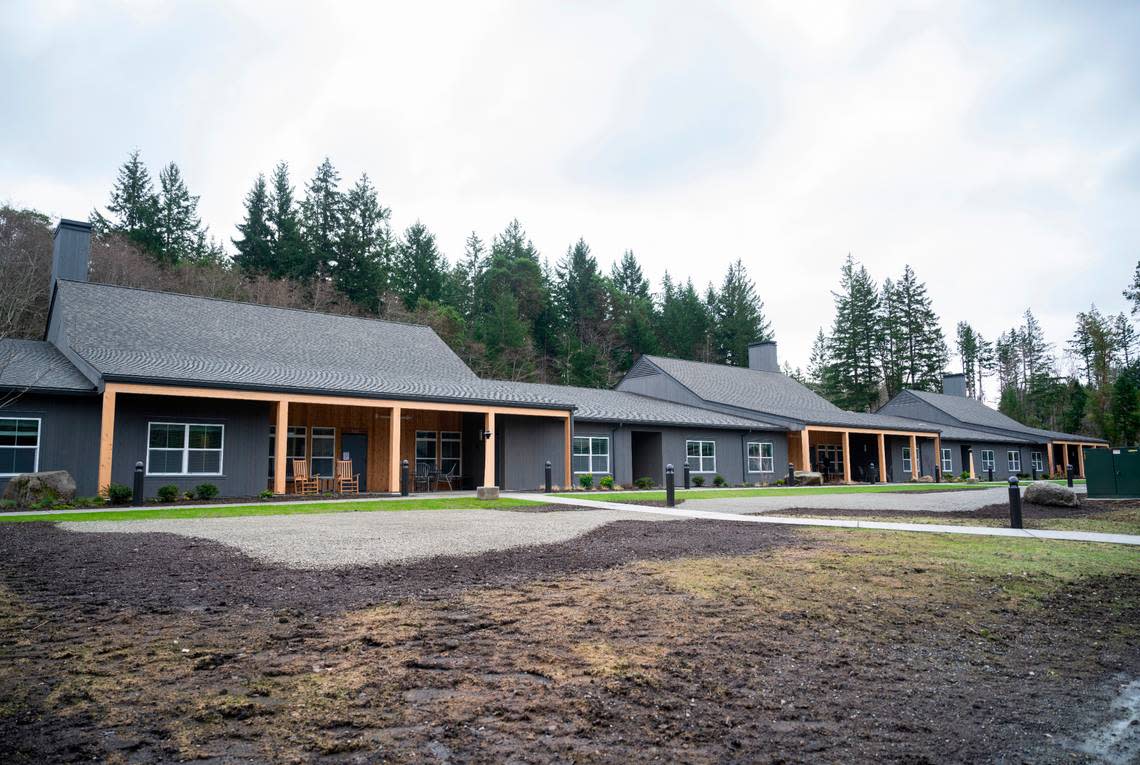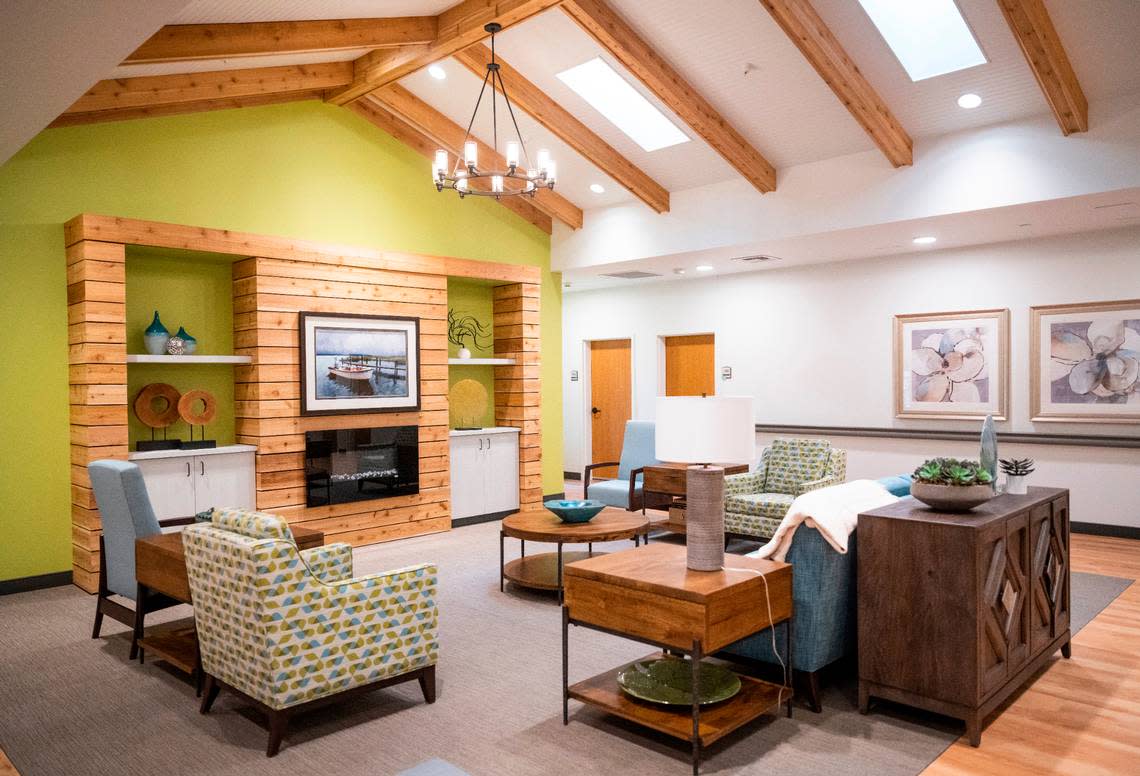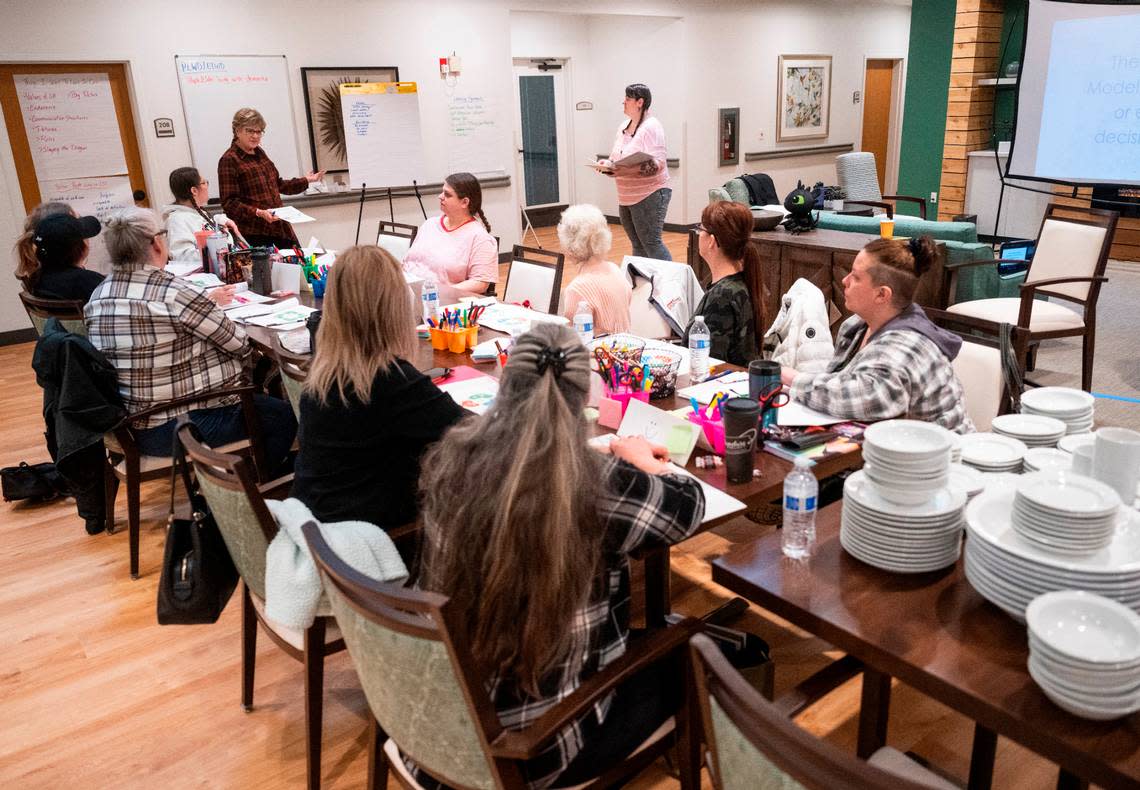A new assisted living facility lets rural Pierce County residents age in their community
The first assisted living facility on the Key Peninsula is close to opening its doors.
Residents will move in Feb. 6, after a state inspection clears.
The Mustard Seed Project was founded by Edie Morgan in 2006. She’s a Key Peninsula resident and long-time social worker, who wanted to help those on the Key Peninsula age safely in place in their homes, Eric Blegen, executive director of the project, told the Gateway Jan. 25.
The Mustard Seed Project was known for its senior ride program, a partnership with Catholic Community Services to provide rides to medical appointments, grocery shopping, and elsewhere. The Mustard Seed Project also provides information and referrals concerning health and wellness and housing.
Expansion
In 2016, the Mustard Seed project bought the former Roadhouse restaurant and the 5 adjoining acres for $925,000, with plans to expand and build an assisted living facility on the property.
The idea was for The Mustard Seed Project to continue offering programs and services in one building, and on-site housing in another.

Remodeling the restaurant into a community center and building the assisted living homes cost $14 million.
Some funding came from a $7.8 million rural development loan from the U.S. Department of Agriculture. The other $5.7 million the project raised from individual donations, foundations, Pierce County, and the state of Washington.
“We could not have done it without the whole community,” Blegen said. “We hope TSMP can be a model for other areas. So many rural places have to send elders to urban areas, having to pull them out of their communities. We hope we can inspire others to do this.”
In Nov. 2021, construction began for the on-site living facility that will soon be home to 30 residents.
“It’s amazing it took just over a year to build,” Blegen said. “In some ways, it was an impossible dream, but it’s actually all coming together.”
The property is now split into two areas, the community center (called The Crandall Center) and The Village.
A local option for care
The Village is the new on-site living facility, made of three small homes under one long roof.
“Before us, there has not been a place seniors in Key Peninsula could go without pulling them out of their community,” Blegen said.
The Village gives elders a local option for care.
Each home offers a mix of privacy and shared community spaces, with 10 bedrooms in each.
There are two assisted living homes that have a large living area, fireplace, long dining table, and kitchen. Each bedroom has a private bathroom and kitchenette.
One home is a memory care facility for elders living with dementia. It also has a living area, fireplace and kitchen, but it has a more spread-out dining area to allow elders more room if they need space to be fed.
Sometimes for people in memory care it can be a lot sitting at a table with 12 people, Marion Sharp, the project’s fund development director, told the Gateway Jan. 25.
Residents will begin moving in Feb. 6 in phases.
The staff hopes to have all 30 residents moved in by the end of spring. They will be at full capacity and have a waiting list of others hoping to move in.
Outside each home is a patio, offering covered sitting space, and a concrete walking path.
There will also be room to garden on the patios, Blegen said.
“For everybody, being outside is restorative,” Sharp said.
Each home functions independently and the doors between them will remain closed, Blegen said.
“Once elders are moved in, they can decide if they want the doors open to allow flow between the homes,” Blegen said. “No one can just walk in uninvited.”
Some residents have begun sending furniture to move into their rooms.
The cost to live at The Village varies by the level of service needed by each elder, with five levels of care for assisted living and four levels for memory care, Sharp told the Gateway.
The range for assisted living starts at about $4,800 and goes up to $7,500 for the highest level of care.
“We imagine the average person in assisted living would pay something like $6,500 per month,” Sharp said.
The cost of memory care is higher, beginning at about $6,800. Costs increase with the level of care needed by the elder, and could be as high as $9,000 per month
“We have planned our rates so that we could have 30% of our elders, nine people, be Medicaid-eligible,” Sharp said.
Elders who are Medicaid-eligible pay a lower cost, Sharp said.
Greenhouse Project
The Mustard Seed Project built the facility with the Greenhouse Model in mind.
The model is a method created by Dr. Bill Thomas, a Harvard-trained geriatrician. It’s used by The Greenhouse Project, an nonprofit organization that specializes in alternative living environments rather than traditional nursing home care facilities.
“It’s a way of taking care of seniors on the belief that everyone has the right to age without sacrificing the joys of life,” Blegen said.
The Greenhouse Model encourages elders to spend time with other elders and Shahbazim, building relationships.
Shahbazim is a term The Mustard Seed Project and The Greenhouse Project use to describe care takers.
The term refers to a “Shahbaz,” the name of a bird in Persian mythology that protected the king, Blegen said.
The model creates a non-restrictive environment, where elders have autonomy and independence in the village, Blegen said.
“They don’t have to show up to breakfast at a certain time,” Sharp said. “If they are hungry at anytime they can go to the kitchen and grab something, just like it’s their house. They don’t have to follow the traditional rules exactly like many institutional places require.”
In each home is an open-hearth area, a room where elders can sit on couches and chairs, or in the kitchen with one another.

“You have this big common table where the elders and Shahbazim have their meals together, and residents are encouraged to help cook if they want,” Blegen said.

Shahbazim at The Village will help protect the residents. They also live on the Key Peninsula.
“They’ve traveled to other facilities, but now they’ll be able to serve the elders in their own community,” Blegen said.
The rest of the campus
Since obtaining the former Roadhouse restaurant, they’ve been able to use the 5,000-square-foot building as a space elders in the community can go for resources, programs and to socialize.
The building — now called The Crandall Center — includes staff offices, a commercial kitchen, dining room, activity room, basement and outdoor deck looking over Key Center.
“The afternoon sun hits the deck perfectly,” Sharp said.
Inside The Crandall Center’s activity room, they offer SAIL (Stay Active and Independent for Life) exercise classes for those 65 years and older, three times a week.
“It’s a basic senior exercise class to help promote balance and strength,” Blegen said.
Gentle yoga is offered once a week.
A daily snack bar will soon open 10 a.m. to 4 p.m.
“People can drop in and have snacks like soups and sandwiches,” Blegen said.
The Crandall Center will also host brunch every Monday.
They want the property to feel like a campus that’s all connected, Sharp said.
“The idea is that families, visitors, and residents in the village cross the road, and come over to The Crandall Center for snacks, hang out with their friends, neighbors and participate in programs,” Blegen said.
There’s still more to do on the property, which they’re calling phase two.
That will include landscape additions, an outdoor exercise area and a performance stage for musical guests.
Outdoor exercise areas are common in European senior living communities, Blegen said. Visitors will be able to use the equipment, too.
Correction: An initial version of this article misstated which organization will provide brunch at The Crandall Center. The Mustard Seed Project will provide brunch on Mondays.
